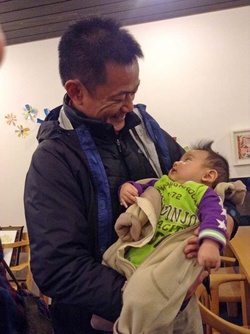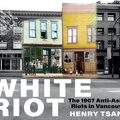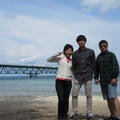After a long trek across the country, Linda Ohama’s Cloth Letter exhibition has finally arrived in Toronto and Mississauga, Ontario for the Christmas and New Year holidays.
The exhibition can now be viewed at the Toronto Japanese Canadian Cultural Centre from December 12 to the end of January. Another exhibition will be on display at the Mississauga Central Public Library from January 11 to February 16, 2014.
After an extensive tour of Japan, the tour arrived in Canada in the spring of 2013. The tour began with exhibitions in Burnaby, Richmond and North Vancouver and downtown Vancouver, British Columbia. It went on to receive enthusiastic responses from Canadians in Whitehorse, Leduc (Alberta), Winnipeg, Montreal and at the Diefenbaker Canada Centre at the University of Saskatchewan (U of S).
Reporting from Saskatoon, Sachiyo Kanzaki, a Japanese post-doctoral student studying there wrote:
“Our location is on the University Campus, in a building called Diefenbaker Canada Centre, therefore, many people that do not have special interests in Japan or Nikkei including students and visitors for the center other expos stopped by to see our installations.”
“In Saskatoon, there is no Nikkei center nor significant Japanese/Nikkei population, so people first thought of our installation as ‘a quilts exhibition’. Then, visitors read the written information near the quilts and understood the full meaning and remembered 3/11.”
Describing her personal connection to the exhibition, Sachiyo said, “Carin Holroyd had the good idea to incorporated the exhibition with a Japanese Studies Association of Canada conference. I was involved in the organisation of this event. I also overviewed the installation. But, more importantly, I am Japanese, and I was really shocked by 3/11 which caused me to remember my Great Hanshin earthquake experience, so it was a nice opportunity for me to help spread awareness in an unusual way and in an unexpected location.”
U of S associate professor Carin Holroyd adds, “The most interesting part was watching people find cloth letters from their home town (my husband is from Whitehorse, Yukon and he was thrilled to see a set of letters from there). This process provided a strong reminder of how many different parts of Canada were involved and how strong the connections were with Tohoku. The students, in this way, became stand-ins for all Canadians. Their letters and prayers represented the country as a whole.”
Carin continues, “I was scheduled to be in Japan the week after the earthquake and tsunami. I followed the crisis very intensively and gave a public lecture on the process at the University of Waterloo. Nine months later, I was in Japan and spent five days as a volunteer in Ishinomaki. I learned a lot about community resilience and Japanese determination. It was a valuable experience. The children's quilts commemorate the disaster but also remind us of the humanity that surrounds both the enormous losses and the indomitable human spirit.”
Reporting on the continuing recovery in Tohoku, Linda Ohama writes in a recent email, “I am near the end of filming (a documentary about the 3/11 recovery), mainly in the Fukushima Daiichi nuclear reactor area. Just came back from Iwaki city where I spent time interviewing and visiting the temporary Naraha school. Naraha and Futaba are both trying to think of the future but as you know this is not guaranteed yet.”
“Also met with mothers who have been taking self action in testing the school grounds of their children and pressuring the local governments about the food and health safety of their kids. It is still such a poor situation around there,” she emphasizes.
One of the most poignant highlights of the exhibition are the cloth letters from Fukushima.
Linda adds, finally, “When you read messages from a six year old who wonders if his world will ever be safe again or a teenager who wonders if they can get married and have a normal life... their messages are so reflective of the true feelings of the people who have been affected by the ongoing Fukushima nuclear disaster.”

Three mothers and a new baby with Linda. "Life is so different for each of them because of their location close to the Daiichi nuclear plant, but they share the same basic joys of love, worry, and care as people everywhere." (Photo courtesy of Linda Ohama)
* * * * *
The exhibition can now be viewed at the Toronto Japanese Canadian Cultural Centre from December 12 to the end of January. Another exhibition will be on display at the Mississauga Central Public Library from January 11 to February 16, 2014.
The Toronto JCCC is located at 6 Garamond Court in the Don Mills area. Phone: (416) 441-2345. Website: www.jccc.on.ca. The Mississauga Central Library is located at 301 Burnhamthorpe Rd. West. Phone: (905) 615-3500. Email: library.info@mississauga.ca
The tour’s next scheduled stops are the Japanese American National Museum in Los Angeles, California and at the Museum of Civilization in Ottawa both in March 2014. For more up-to-date tour information please check out www.clothletters.com.
© 2013 Norm Ibuki










